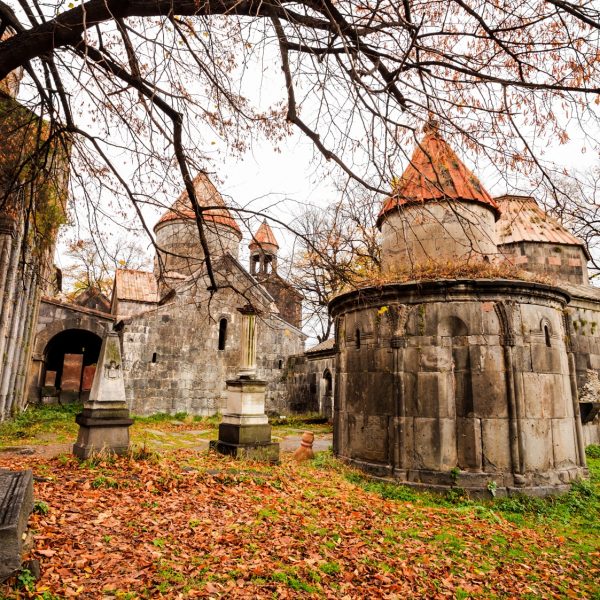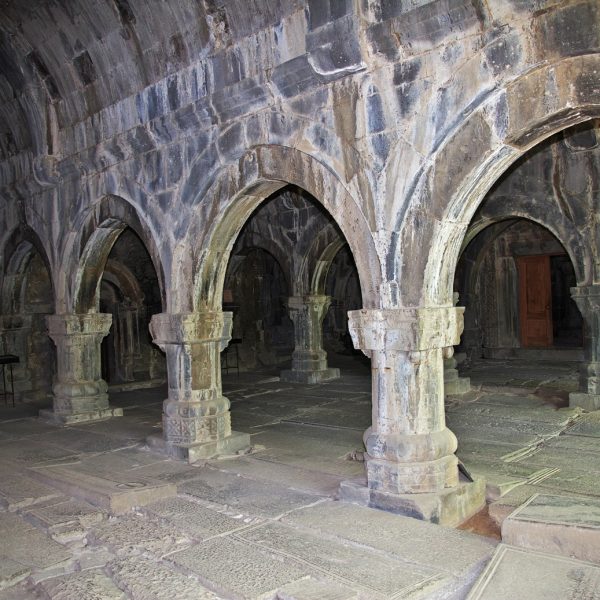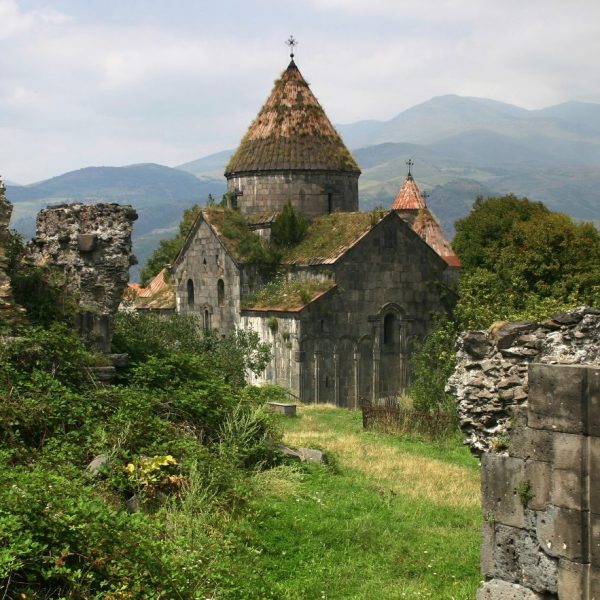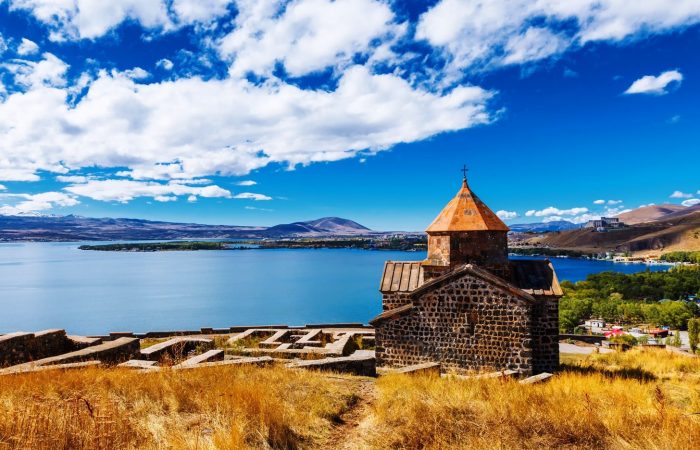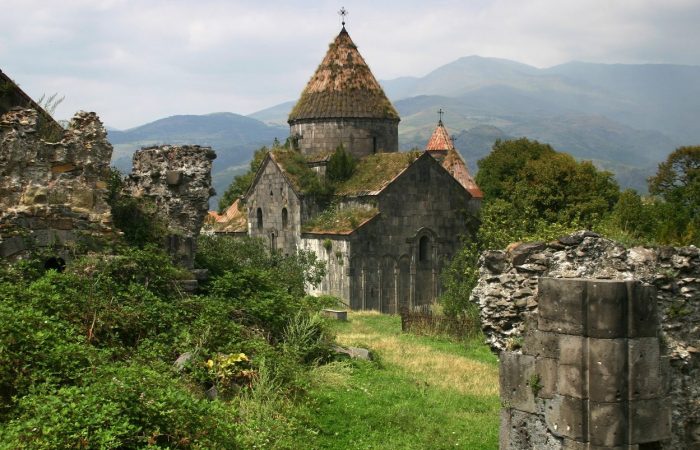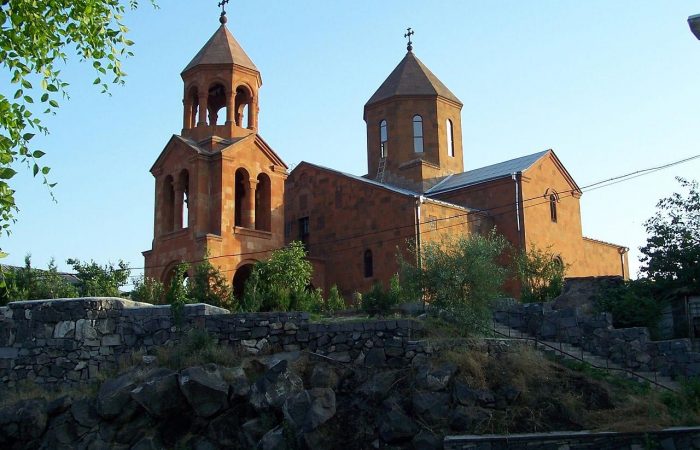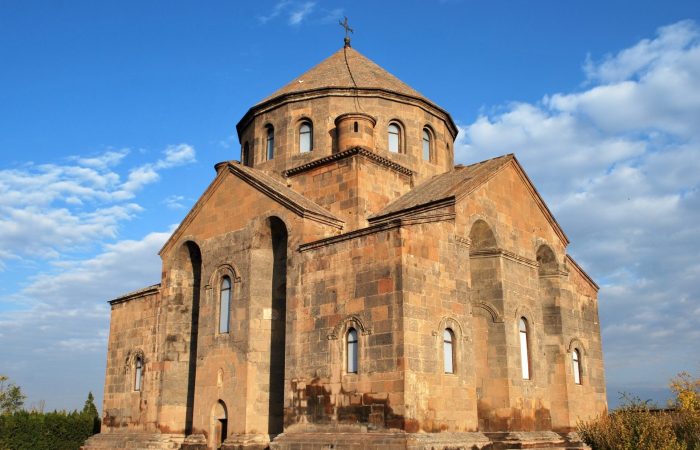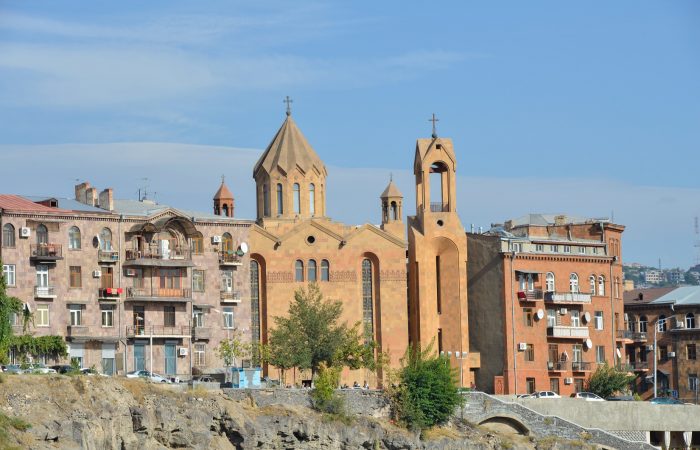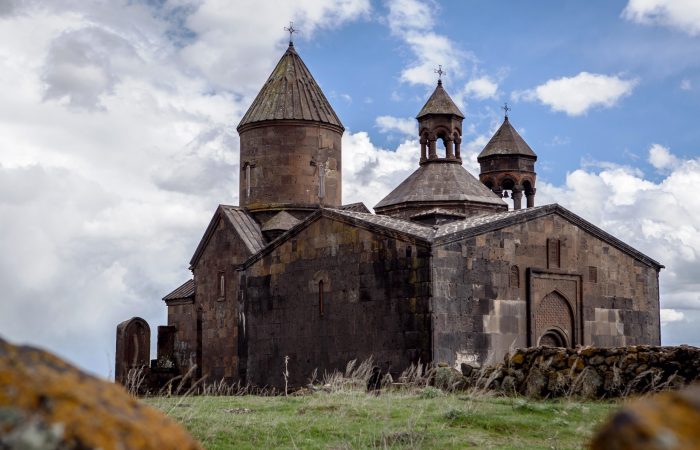Sanahin Monastery: History
Both the Monastery of Sanahin and the Monastery of Haghpat, located close to each other, are the bearers of the same period spirit, yet each of them had its own role and place as a scientific, educational, cultural and spiritual center.
It’s yet unclear when exactly the monastery was founded. The legend has it the monastery was built in the fourth century when the Saint Nshan (Sign) Cross was erected. As to the naming, it is believed that Sanahin means “սա նրանից հին է,” which translated into English means “it’s older than the other one.” Relying on what the legends recount Sanahin was named the monastery, which was older than Haghpat.
The present-day building of the monastery is believed to be built in the tenth century, more precisely in the 930s by King Abas Bagratuni. According to Armenian historians Kirakos Gandzaketsi and Vardan Areveltsi, the complex’s first building was constructed by Armenian priests who had refused Chalcedonian faith and immigrated to Armenia from Byzantine. Humanitarian sciences, music and medicine were taught in Sanahin Monastery. Also, various scientific works were being composed. The then popular scribes and miniaturists used to work in the monastery as well.
The Monastery of Sanahin was later attacked by Mongols. Firstly the fortress of Akner was occupied. The fortress lied between the monasteries of Sanahin and Haghpat and provided defense for them.
Sanahin Monastery: Saint Astvatsatsin Church
The Church of Saint Astvatsatsin (Holy Mother) is located in the middle of the complex and was built in between 928-944. From the outside the church represents a rectangular structure, while form the inside it’s a domed cruciform building with four annexes in the four corners. The dome and the drum are thought to be built in 1652; it’s when the church was being reconstructed.
Sanahin Monastery: Saint Amenaprkich Church
Saint Amenaprkich (All Savior) Katoghike Church can be found close to Saint Astvatsatsin Church. It was built by Queen Khosrovanuysh, the wife of King Ashot III the Merciful. The church, also, has a domed cruciform structure and due to its location dominates over other buildings of the complex. At the top of the eastern façade there is a bas relief, which depicts Kings Gurgen and Smbat, the two heirs of the Queen. Later Gurgen became the ruler of Ani, and Gurgen ruled in Lori.
Notably, the walls of both Saint Astvatsatsin and Saint Amenaprkich churches were once covered with frescoes very few of which have survived.
Sanahin Monastery: Gavits
The gavits of Saint Astvatsatsin and Saint Amenaprkich churches are located to the east of both churches. They are the largest buildings of the complex that used to serve for secular and cultic purposes. The gavits could accommodate a large number of people during services, meetings and Masses. Other than that, the gavits were used as sepulchers, and therefore various tombstones can be seen on the ground.
The Gavit of Saint Astvatsatsin Church
The Gavit of Saint Astvatsatsin Church was built by Prince Vache Vachutyan in 1211. It represents a vaulted triple-nave hall structure. The two-row three columns, which divide the hall into three naves, differ with their sculptures and type. In their turn, the halls with high and vaulted roofs as well as low arches make the gavit appear even more imposing.
The Gavit of Saint Amenaprkich Church
The Gavit of Saint Amenaprkich Church was built by architect Zhamhayr in 1181. The construction was sponsored by Prince Kurd and Grigor Tutevordi, who was the monastery’s leader. The gavit stands out with its interior design. On the four columns of the large hall there are bas reliefs.
Sanahin Monastery: Academy
The academy of Sanahin Monastery is an example of late tenth century and early eleventh century civic architecture. It continues the gavit of Saint Astvatsatsin Church. On the walls of the long hall there are niches, which presumably served as seats. It is considered to be the academy of Grigor Magistros (990-1059), where he delivered lectures.
Grigor Magistros Pahlavuni was a recognized eleventh century Armenian philosopher, pedagogue and scientist.
Sanahin Monastery: Belfry
The belfry of Sanahin Monastery represents a three-story tower with small annexes. It was built within 1211-1235. Of interest is the western façade, on which the huge cross made of red tufa stone can be seen.
Sanahin Monastery: Scriptorium, Spring
The scriptorium of Sanahin Monastery was built by Queen Hranush, the daughter of King David Anhoghin (Landless).The spring was built adjacent to the monastery’s northern wall in 1831. It operates until today.
Sanahin Monastery: Chapel of Grigor
The chapel of Grigor is a small domed building with four apses. Built at the end of the tenth century the chapel was reconstructed in 1061. The present-day dome was built much later, in all likelihood, during the 1652 reconstruction works.
Sanahin Monastery: Sepulchers
The Zakaryan Sepulcher was built in the 10th-11th centuries. Adjacent to Saint Astvatsatsin church there used to be the sepulcher of Gurgen and David Kyurikyans. One of the two separate vaulted cells was built at the end of the 10th century, and the other in the middle of the 11th century. There is also the sepulcher of Arghutyan-Erkaynabazuks (Long-Armed) who originated from the Zakaryans.
Sanahin Monastery: Saint Hakob and Saint Harutyun Churches
Built in the second half of the 10th century Saint Hakob (Jacob) Church belongs to the cross-winged domed type of churches with four partially ruined annexes in the corners. It’s one of the oldest buildings of the complex.
To the east of Saint Hakob Church there is the Church of Saint Harutyun (Resurrection). It was built in the 13th century and stands out with its vaulted hall, which comes with equal-size apses on the eastern side.
Sanahin Monastery: Khatchkars
There are several khatckars (cross-stones) in the territory of Sanahin Monastery out of which there are two khatchkars, which are real masterpieces of khatchkar art. They are the khatchkar-tombstone of Grigor Tutevordi (1184) and the khatchkar of Sargis (1215).
Another notable khatchkar is the one dedicated to King Abas Bagratuni. The khatchkar was carved in 1192 upon the order of Queen Vaneni, the wife of Abas Bagratuni who passed away untimely. She also built a bridge in his memory. The bridge can be found in the center of Alaverdi and is still used by the locals.
So the overall design of Sanahin Monastery is beyond exceptional, and a visit to the monastery will definitely add to your knowledge and enlarge your perception of high value architecture.

